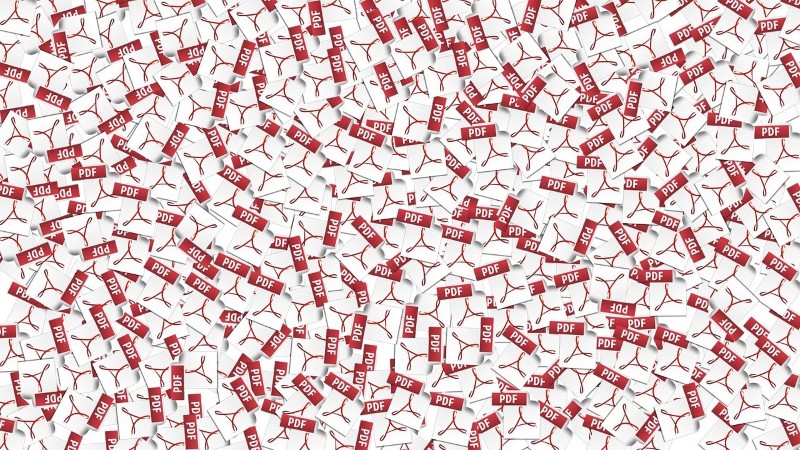The Wonder that is the PDF
The PDF is an amazing format. It can contain pretty much anything, from basic text to complex images, all the way to videos and digital signatures. PDFs are so powerful that they can be read by a huge variety of different programs, from Adobe’s own Acrobat Reader to programs like Microsoft Word and various browsers. In fact, I like PDFs so much that I’m writing an article about them.

A Magical Mystery Box!
I’ll be honest, I have no real idea how a PDF actually works. I do know however that the PDF, short for Portable Document Format, was made by Adobe. PDFs consist of three things. The first is a sort of description of what is in the file, which says what and where everything is in the file. A bit like metadata for a JPEG file, or the HTML that describes a web page’s layout. You then have a system that embeds fonts inside the PDF, so the text looks consistent regardless of who is reading the file. And then you have some sort of storage system which contains the actual data inside the PDF, like the pictures and text and everything.
At least, that’s what the Wikipedia page says.
Still, how any of this works in reality is far beyond my knowledge. It’s a magical file format that can contain all sorts of mysteries. A file format I use heavily for my work.
Everyone can open a PDF!
I’ve had very few occasions where people can’t open PDFs. And almost all of these cases are because people are using really, really old tech. That didn’t have Adobe Acrobat or Adobe Reader installed.
Most people running Windows 10 have no excuse not to be able to open PDFs. Because all versions of Windows 10 have Microsoft Edge, which can open a PDF no problem. It also handily allows you to print a PDF if you need to. That being said, most modern browsers will happily let you view a PDF.
If you somehow don’t have Edge, or any web browser, then, well, I don’t know what to say.
PDFs are a light way of storing vector graphics.
Normally, vector graphics, something I have mentioned before, come in the rather hard to open SVG or EPS formats. Or, worse, they come in exclusive formats like .ai or .cdw, which can only be opened by their respective programs. You need a copy of Adobe Illustrator to open a .ai file. Because everyone can open a PDF though, this means that you can store fancy things inside them so that the layman can view them! If I draw, for example, the layout for a cardboard box for packaging, I can send the same sort of file to everyone. I can send it to a client for approval, I can send it to my printer to print it out or I can send it across the planet to be cut out and made into, well, a box.
This applies for pretty much everything. I’ve drawn mock-ups of intricate enamel pins to be made in the Far East, vectorized complicated artwork for hang tags to be printed in the UK and put together magazines here in Cyprus. And the end client can easily see these files themselves, thanks to PDFs.
PDFs can also be my worst nightmare.
There are some downsides with PDFs though. Mostly around settings. You can very easily password-protect a PDF… which means you need a password to edit it later. If you don’t have the password to a PDF, you’re not completely screwed though, there are ways of opening PDFs.
My worst nightmare though is when people don’t quite understand the difference between, for example vector artwork and images embedded in PDFs. It’s always nice to hear “here’s a pdf for you, you should be able to work from that!”. It’s terrifying to open that file and realise, well, it’s a low quality JPEG embedded in a PDF. Sometimes, when I get back to them, they’ll go “oh oops” but, sadly, quite often this is just the best some people have.
And if you don’t embed a file and then send the PDF to be edited elsewhere… Well that non-embedded file won’t be included when that PDF is opened for editing.
Still, all of this can be handled.
Worst case scenario, I just have to redraw everything manually and spend an eternity matching fonts. Which is always… well, not fun, but certainly interesting.
